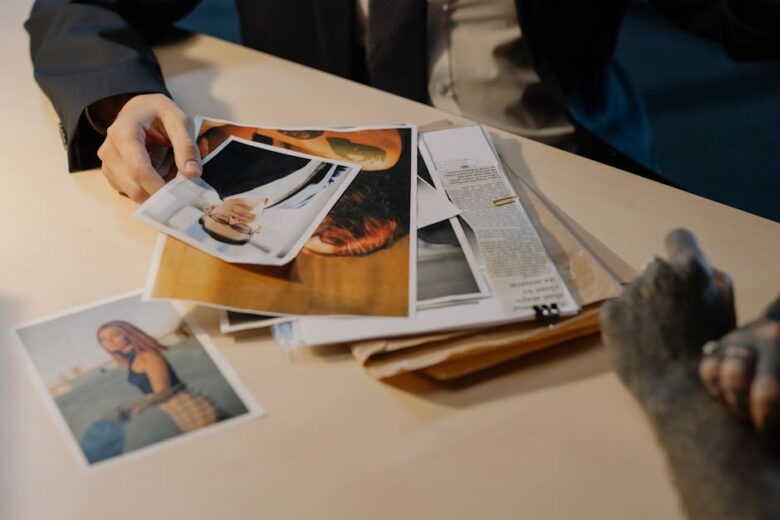The Development of UFO Evidence Collection Methods
In an era where the unknown sparks curiosity and imagination, Unidentified Flying Objects (UFOs) have persistently captured the interest of people worldwide. The enigma surrounding UFOs has led to numerous discussions, theories, and investigations. Over the years, the methods of collecting evidence for UFO sightings have evolved significantly, blending technology with human curiosity. Let’s dive into the fascinating journey of UFO evidence collection and explore how it has developed over time.
Table of Contents
1. Introduction to UFO Phenomena
2. Early Methods of UFO Evidence Collection
3. The Role of Technology in Modern UFO Investigations
4. Government Involvement in UFO Research
5. Public Contributions to UFO Evidence Collection
6. Challenges in Collecting UFO Evidence
7. The Future of UFO Evidence Collection
8. Conclusion
9. FAQs
Introduction to UFO Phenomena
The mystery of UFOs has intrigued humanity for decades. Whether it’s the thrill of the unknown, the possibility of extraterrestrial life, or simply the allure of mystery, UFOs have become a cultural phenomenon. While many sightings are easily explained, a significant number remain unidentified, prompting further investigation and research.
Early Methods of UFO Evidence Collection
In the early days, UFO sightings were often reported anecdotally. Witnesses would recount their experiences through word of mouth or written reports, often accompanied by simple sketches. These reports, though fascinating, lacked the scientific rigor needed to convince skeptics.
Photographs and videos began to emerge as more reliable sources of evidence. However, the quality and authenticity of these materials were often questioned due to the limitations of early cameras and the potential for hoaxes. Despite these challenges, these early attempts laid the groundwork for future methods.
The Role of Technology in Modern UFO Investigations
With the advent of advanced technology, the methods of UFO evidence collection have become more sophisticated. High-resolution cameras, drones, and satellite imagery have enhanced the ability to capture detailed evidence of UFO sightings.
The development of radar technology has also played a crucial role. Radar enables the detection of unidentified objects in the sky, providing corroborative data to visual sightings. Moreover, advancements in forensic analysis have allowed investigators to scrutinize photographic evidence more thoroughly, distinguishing genuine sightings from fabrications.
Government Involvement in UFO Research
Governments around the world have shown increasing interest in UFO phenomena. In the United States, the Pentagon’s establishment of the Unidentified Aerial Phenomena (UAP) Task Force marks a significant step in official investigations. This task force aims to standardize the collection and analysis of UAP data across government agencies.
Similar initiatives have been undertaken by other countries, reflecting a growing acknowledgment of the importance of systematic UFO research. These governmental efforts have bolstered the credibility of UFO studies and have encouraged more rigorous evidence collection methods.
Public Contributions to UFO Evidence Collection
The democratization of technology has empowered the public to contribute significantly to UFO investigations. With smartphones in nearly every pocket, individuals can capture and share UFO sightings instantly, providing a wealth of data for researchers.
Online platforms and social media have facilitated the sharing of experiences and evidence, creating global communities dedicated to UFO research. These communities often collaborate with researchers, providing valuable insights and expanding the scope of investigations.
Challenges in Collecting UFO Evidence
Despite technological advancements, collecting credible UFO evidence remains challenging. The transient nature of sightings often makes evidence collection difficult. Moreover, distinguishing genuine sightings from hoaxes or misidentifications continues to be a significant hurdle.
Weather conditions, atmospheric phenomena, and human error can all lead to false positives. Additionally, the stigma surrounding UFOs can result in underreporting, as witnesses may fear ridicule or disbelief.
The Future of UFO Evidence Collection
The future of UFO evidence collection holds exciting possibilities. As technology continues to evolve, new tools such as artificial intelligence and machine learning could revolutionize the analysis of UFO data, enabling quicker identification of patterns and anomalies.
Collaborative efforts between governments, scientists, and the public are likely to expand, fostering a more comprehensive understanding of UFO phenomena. As society becomes more open to the possibilities of the unknown, the pursuit of credible evidence will continue to push the boundaries of exploration and discovery.
Conclusion
The journey of UFO evidence collection is a testament to human curiosity and the relentless pursuit of the unknown. From simple sketches to sophisticated technologies, the methods have evolved dramatically, reflecting advancements in science and society’s growing openness to exploring the mysteries of our universe. As we look to the future, the quest for credible UFO evidence promises to remain as intriguing as ever, offering endless possibilities for discovery and understanding.
FAQs
Q1: What are the primary sources of UFO evidence today?
A1: Today, primary sources include high-resolution photographs, video footage, radar data, and satellite imagery.
Q2: How do governments contribute to UFO research?
A2: Governments contribute through official investigations, such as the UAP Task Force in the U.S., standardizing data collection and analysis methods.
Q3: Can the public participate in UFO evidence collection?
A3: Yes, the public can contribute by capturing and sharing sightings using smartphones and participating in online UFO research communities.
Q4: What are the main challenges in collecting UFO evidence?
A4: Challenges include the transient nature of sightings, potential hoaxes, misidentifications, and the stigma associated with reporting UFOs.
Q5: What technological advancements might impact future UFO investigations?
A5: Future advancements might include AI, machine learning, and enhanced forensic analysis, improving data analysis and pattern recognition in UFO research.
🌌 Keep looking up, for the universe is vast and full of mysteries waiting to be uncovered! 🌠
Looking for a side hustle
Check out one of the best around atm
